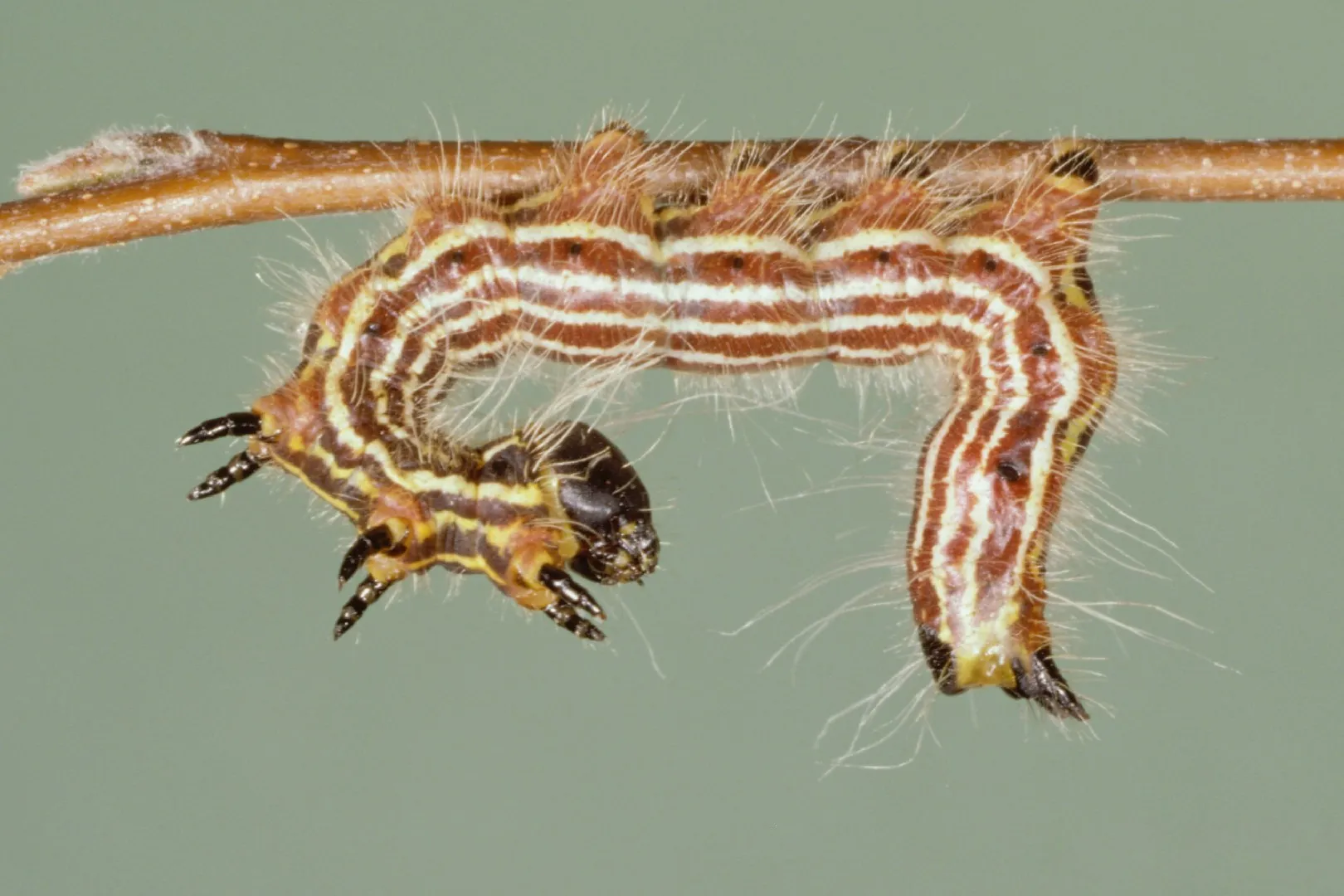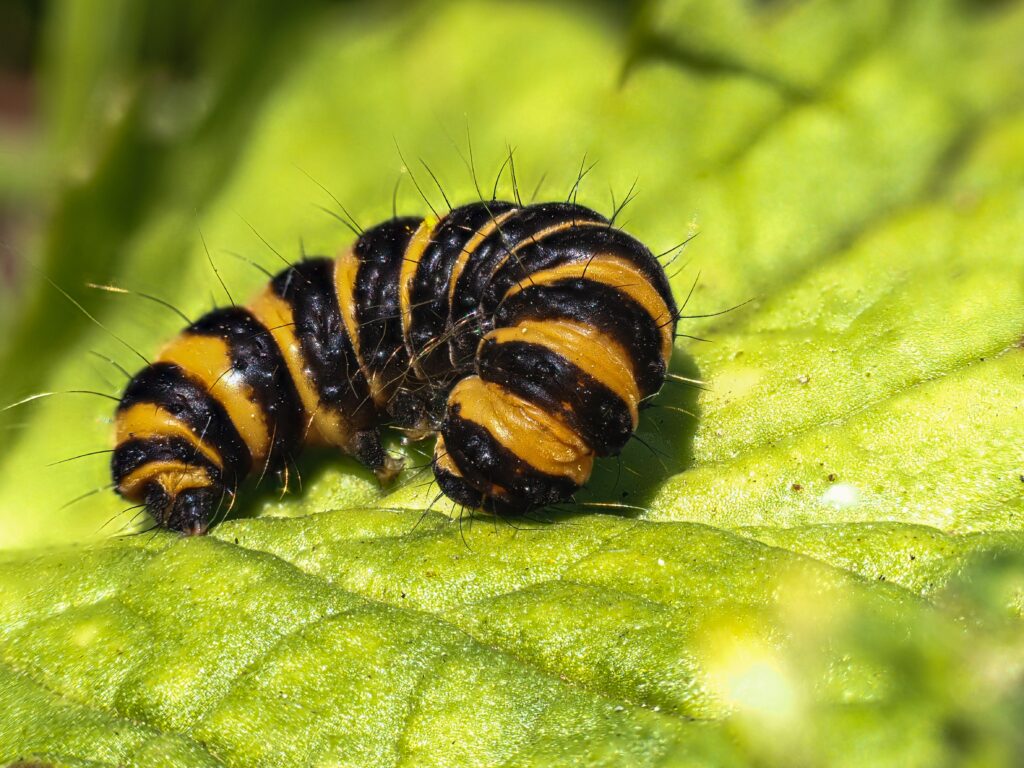Want to know about yellow-necked caterpillars? These little creatures may not be the most famous insects in the garden, but they can impact your trees. Here, we’ll get to know everything you need to know about these caterpillars and how to take care of your trees when they come around.
Yellow-necked caterpillars may not look like much initially, but they undergo interesting changes as they grow. We’ll start by describing what these caterpillars look like in their different stages so you can easily recognize them when you see them.
So, let’s start this process of caring for yellow-necked caterpillars and your trees.
What Yellownecked Caterpillars Look Like

Yellow-necked caterpillars, at the start of their life, are tiny creatures that look like very little creatures. Their early appearance is characterized by a purplish shade with slender white stripes running along their soft, cylindrical bodies.
As this yellow caterpillar progresses through its development, it undergoes a variation. They grow to a length of about 2 inches and transition into a black color, made with clear white stripes that feature their form.
However, what truly differentiates them is a prominent orange-yellow mark positioned just behind their head. Have a Butterfly garden kit that includes habitat and live caterpillars for children to observe the amazing process.
How Yellownecked Caterpillars Grow
The growth and development of yellow-necked caterpillars are fascinating aspects of their life cycle. It all begins with the laying of clusters of eggs by yellow-necked caterpillar moths.
These eggs find their resting place on the underside of leaves, typically during July. From these eggs, tiny caterpillars emerge, and during their early stages, they tend to remain in a closely-knit cluster as they feed excessively on the surrounding foliage.
As these caterpillars mature, they gradually scatter throughout the tree, transitioning from communal feeding to individual foraging. This shift in behavior allows them to find the tree more quickly and make the most of the available resources.
Dealing with Yellownecked Caterpillars

When it comes to managing yellow-necked caterpillars, it’s essential to consider the timing and necessity of control measures. In many cases, controlling these caterpillars may not be warranted, particularly during the late season, which typically extends past mid-August.
By this time, the caterpillars have grown considerably, and both their presence and the associated damage have become more noticeable. Effective control measures are often most beneficial for young trees, especially those that have been recently transplanted or are facing stressors.
If you happen to spot clusters of young larvae during mid to late July, you can go for a manual approach to remove them. This can be accomplished by gently plucking off a single leaf or trimming a single terminal that harbors the clustered caterpillars.
By understanding the best timing for control, you can make informed decisions to protect your trees. Use a bug catcher kit, which is a child-friendly kit with tools for safely catching and examining caterpillars and other insects.
What Yellownecked Caterpillars Eat
The dietary preferences of yellow-necked caterpillars primarily focus on the leaves of various trees, particularly amazing species. These compulsive feeders show a particular bond for the foliage of trees such as oak, apple, cherry, and other deciduous varieties.
Their feeding habits involve samples on the leaves, which can lead to mild defoliation, a term used to describe the loss of leaves from a tree’s canopy. While this feeding behavior may result in the use of a significant portion of leaves, it’s worth noting that trees possess the capacity for regrowth and recovery.
However, in cases where defoliation becomes extensive, especially in younger or stressed trees, it may be wise to consider management strategies to reduce potential harm to the tree’s overall health.
What Yellownecked Caterpillars Do

The behavioral patterns of yellow-necked caterpillars are interesting facets of their life cycle. During their initial stages, these caterpillars tend to gather in clusters, allowing them to feed together and grow as a collective group.
This clustering behavior is often observed as they hatch from their eggs and begin on their journey as tiny caterpillars. As yellow-necked caterpillars progress through their development, they undergo a shift in behavior. They transition from feeding in clusters to spreading throughout the tree canopy, where they feed individually.
This dispersion allows them to find more foliage and make the most of available resources. Understanding these behavioral shifts can provide insights into the life cycle of yellow-necked caterpillars and their impact on the trees they inhabit. Use a magnifying glass for a closer look at the details of baby caterpillars and their features.
Conclusion
All in all, taking care of yellow-necked caterpillars and the trees they inhabit can be a simple and manageable task. By understanding their life cycle and feeding habits, we can make informed decisions to ensure the health and life of our trees. These caterpillars start small changes as they grow, so keeping an eye on them is important.
Dealing with them doesn’t always require special measures. If you see clusters of young larvae, gently removing them by hand can be effective. Caring for yellow-necked caterpillars is about finding that perfect place where our trees can grow.
Now you have the best tips for caring for your yellow-necked caterpillar.
Be sure to check out these other posts for more fascinating insights:

